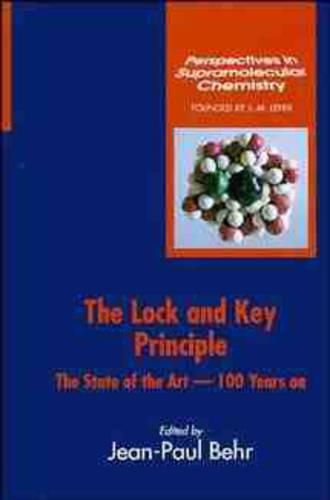Readings Newsletter
Become a Readings Member to make your shopping experience even easier.
Sign in or sign up for free!
You’re not far away from qualifying for FREE standard shipping within Australia
You’ve qualified for FREE standard shipping within Australia
The cart is loading…






Perspectives in Supramolecular Chemistry will relate recent developments and new exciting approaches in supramolecular chemistry. In supramolecular chemistry, our aim is to understand the molecular chemistry beyond the covalent bond the series will concentrate on goal-orientated supramolecular chemistry. Perspectives in Supramolecular Chemistry will reflect research which develops supramolecular structures with specific new properties, such as recognition, transport and simulation of biosystems or new materials. The series will cover all areas from theoretical and modelling aspects through organic and inorganic chemistry and biochemistry to materials, solid-state and polymer sciences, reflecting the many and varied applications of supramolecular structures in modern chemistry. The Lock and Key Principle The State of the Art 100 Years on Edited by Jean-Paul Behr Published 100 years after Emil Fischer first proposed the lock-and-key principle, this volume provides a complete review of the subject to date and offers suggestions for further research. The major impact of the lock-and-key principle on the chemical, biomedical and materials sciences is discussed by leaders in the field, with chapters dedicated to molecular recognition, nucleic acid and protein chemistry, crystallography and the development of Emil Fischer’s initial ideas. The Lock-and-Key Principle is the most up-to-date review of progress in supramolecular chemistry and the lock-and-key principle, and will become the essential guide to the past, present and future of this remarkable idea. The interdisciplinary nature of this topic is highlighted in The Lock-and-Key Principle ensuring that this volume is essential reading for chemists, molecular biologists, biochemists and materials scientists working in the areas of molecular recognition, enzymology, immunology, protein and nucleic acid chemistry, crystallography, bioinorganic and bioorganic chemistry and supramolecular chemistry.
$9.00 standard shipping within Australia
FREE standard shipping within Australia for orders over $100.00
Express & International shipping calculated at checkout
Perspectives in Supramolecular Chemistry will relate recent developments and new exciting approaches in supramolecular chemistry. In supramolecular chemistry, our aim is to understand the molecular chemistry beyond the covalent bond the series will concentrate on goal-orientated supramolecular chemistry. Perspectives in Supramolecular Chemistry will reflect research which develops supramolecular structures with specific new properties, such as recognition, transport and simulation of biosystems or new materials. The series will cover all areas from theoretical and modelling aspects through organic and inorganic chemistry and biochemistry to materials, solid-state and polymer sciences, reflecting the many and varied applications of supramolecular structures in modern chemistry. The Lock and Key Principle The State of the Art 100 Years on Edited by Jean-Paul Behr Published 100 years after Emil Fischer first proposed the lock-and-key principle, this volume provides a complete review of the subject to date and offers suggestions for further research. The major impact of the lock-and-key principle on the chemical, biomedical and materials sciences is discussed by leaders in the field, with chapters dedicated to molecular recognition, nucleic acid and protein chemistry, crystallography and the development of Emil Fischer’s initial ideas. The Lock-and-Key Principle is the most up-to-date review of progress in supramolecular chemistry and the lock-and-key principle, and will become the essential guide to the past, present and future of this remarkable idea. The interdisciplinary nature of this topic is highlighted in The Lock-and-Key Principle ensuring that this volume is essential reading for chemists, molecular biologists, biochemists and materials scientists working in the areas of molecular recognition, enzymology, immunology, protein and nucleic acid chemistry, crystallography, bioinorganic and bioorganic chemistry and supramolecular chemistry.